When people hear that it is important to have a strong core, they often think that this means strengthening their abdominal muscles. While the abdominal muscles are certainly part of the core, there are many more vital muscles that make up the core of all humans.
Muscle groups of the core include:
-
Abdominals – most people associate a “six pack” with the rectus abdominal muscle. The transversus abominis is a horizontally positioned muscle that plays an important role in movement and spine stabilization.
-
Obliques – the internal and external obliques located along the side of the body play a role in spinal protection and rotation
-
Back muscles – the quadratus lumborum is a deep core muscle located in the lower back, and is important in posture and mobility
-
Spinal muscles – the erector spinae muscle has attachments at the sacrum and pelvic bones and functions to not only move the spine but also maintain posture in an upright position. The lumbar multifidus muscles help to stabilize the spine during movement
-
Pelvic Floor – the pelvic floor houses organs such as the bladder, intestines, uterus, rectum, cervix, and vagina. It also has connective tissue connections with hip muscles
-
Glutes – the glutes are a group of three muscles around the hip and buttock region that influence hip rotation and extension.
-
Diaphragm – the diaphragm is the muscle typically associated with breathing, but does play an important role in coordination and activation of the core muscles.
Now let’s consider some of the benefits of a strong core:
-
Improving posture – strengthening the core muscles can improve sitting and standing postures for work and other daily tasks
-
Stabilizing the lower back – core exercises are beneficial for strengthening and stabilizing the lower back and reducing low back pain
-
Improving exercise form – core strength training helps your workout form because all other movements depend on a stable core to be done in an optimal way
-
Improving balance and stability – performing daily core strengthening exercises have been shown to improve balance in older individuals but also to improve stability in younger athletes
-
Making everyday movements easier – increased core awareness and strength
-
Reducing or preventing pain – core strength training has been shown to prevent or help reduce low back pain, as there is a known correlation between weakened core muscles and low back pain
-
Setting the foundation for other strength training exercises – the core muscles stabilize the center of the body to allow the peripheral muscles (in the limbs) to pull against a stable platform
-
Improved pelvic floor stability and function – improved core strength, including the pelvic floor muscles, can reduce instances of pelvic pain, dysfunction, or incontinence
-
Reducing lower body injuries – research has shown core strengthening shoulder be included in rehabilitation for lower body injuries
Our doctors of physical therapy can identify core strength deficits and can prescribe appropriate and comprehensive core strengthening exercises to help you achieve your goals! Please reach out today if you are unsure how to get started with strengthening your core, or if you are dealing with pain that would likely benefit from core training. We would love to help you!


